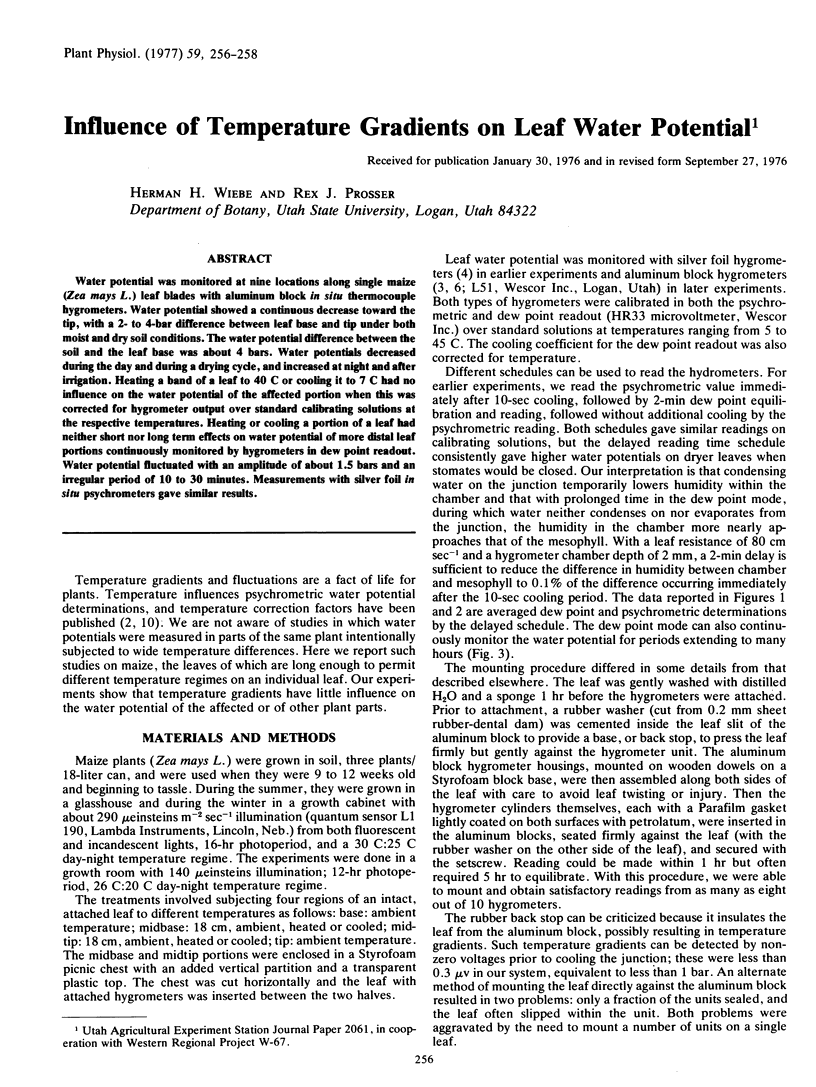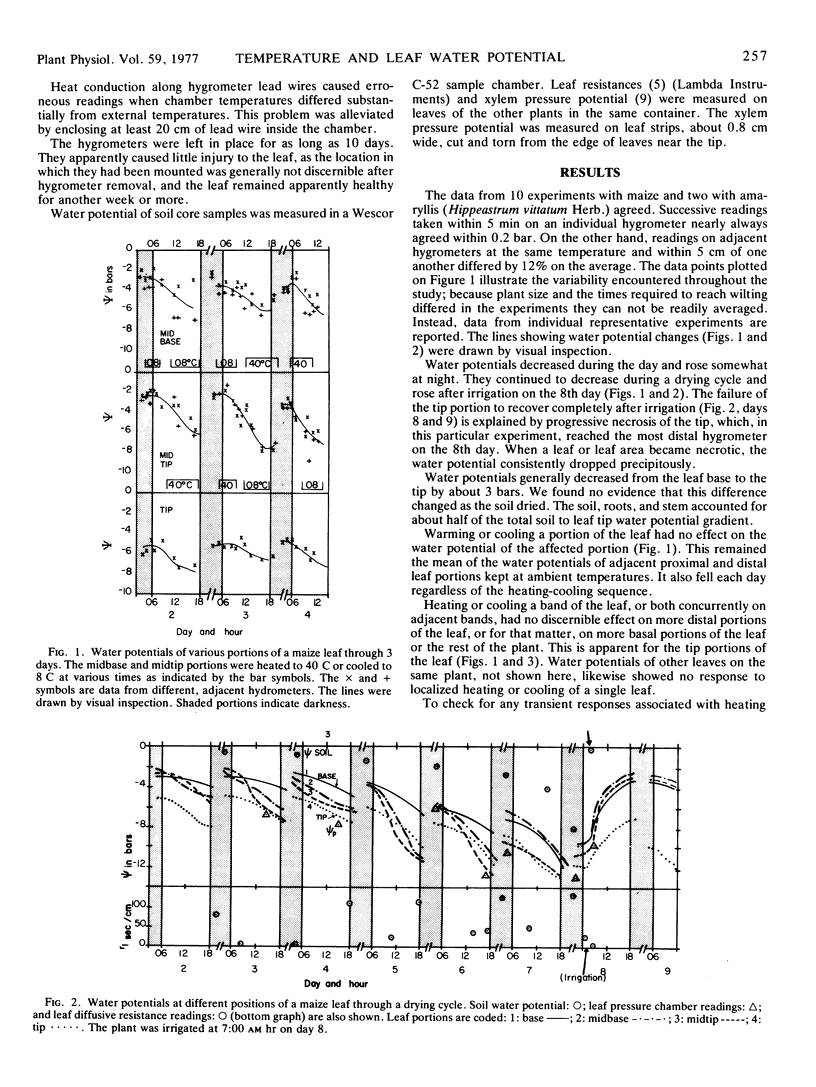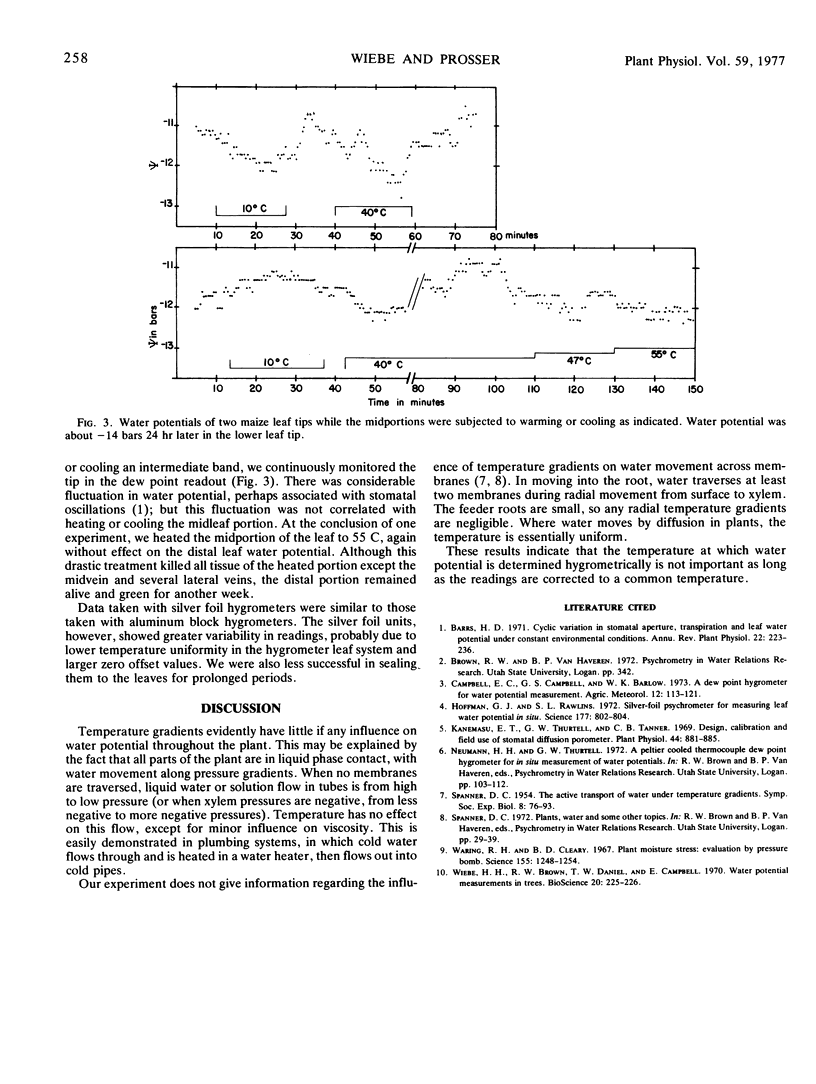Abstract
Water potential was monitored at nine locations along single maize (Zea mays L.) leaf blades with aluminum block in situ thermocouple hygrometers. Water potential showed a continuous decrease toward the tip, with a 2- to 4-bar difference between leaf base and tip under both moist and dry soil conditions. The water potential difference between the soil and the leaf base was about 4 bars. Water potentials decreased during the day and during a drying cycle, and increased at night and after irrigation. Heating a band of a leaf to 40 C or cooling it to 7 C had no influence on the water potential of the affected portion when this was corrected for hygrometer output over standard calibrating solutions at the respective temperatures. Heating or cooling a portion of a leaf had neither short nor long term effects on water potential of more distal leaf portions continuously monitored by hygrometers in dew point readout. Water potential fluctuated with an amplitude of about 1.5 bars and an irregular period of 10 to 30 minutes. Measurements with silver foil in situ psychrometers gave similar results.
Full text
PDF


Selected References
These references are in PubMed. This may not be the complete list of references from this article.
- Hoffman G. J., Rawlins S. L. Silver-Foil Psychrometer for Measuring Leaf Water Potential in situ. Science. 1972 Sep 1;177(4051):802–804. doi: 10.1126/science.177.4051.802. [DOI] [PubMed] [Google Scholar]
- Kanemasu E. T., Thurtell G. W., Tanner C. B. Design calibration and field use of a stomatal diffusion porometer. Plant Physiol. 1969 Jun;44(6):881–885. doi: 10.1104/pp.44.6.881. [DOI] [PMC free article] [PubMed] [Google Scholar]
- Waring R. H., Cleary B. D. Plant moisture stress: evaluation by pressure bomb. Science. 1967 Mar 10;155(3767):1248–1254. doi: 10.1126/science.155.3767.1248. [DOI] [PubMed] [Google Scholar]


